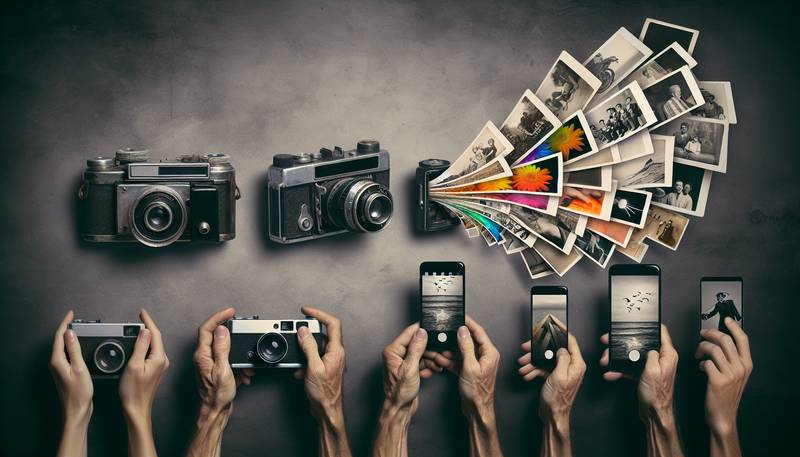The Evolution of Photography: From Film to Phone Cameras

A Brief History of Photography
Photography has come a long way since its inception in the early 19th century. The word "photography" comes from the Greek words "photos" meaning light, and "graphé" meaning drawing. The first photographic process was invented in 1826 by Joseph Nicéphore Niépce, who captured the first-ever permanent photograph called "View from the Window at Le Gras." This photograph took eight hours to expose and was created using a process called heliography.
The invention of the daguerreotype in 1839 by Louis Daguerre marked the beginning of the modern era of photography. This process produced a highly detailed image on a polished silver plate and was the first commercially successful photographic process. It was quickly followed by the invention of the calotype process by William Talbot, which used paper negatives to create multiple prints from a single negative.
The Rise of Film Photography
Film photography began to dominate the industry in the late 19th century with the invention of celluloid film by George Eastman. This flexible, lightweight material made it possible to create rolls of film, which could be easily loaded into cameras. Eastman's company, Kodak, revolutionized photography by introducing the first consumer camera in 1888, called the Kodak camera. This camera came pre-loaded with enough film for 100 exposures and could be sent back to Kodak for processing.
The introduction of the 35mm film in 1913 by Oskar Barnack, who worked for Leica, made photography even more accessible to the masses. This small format film was easy to use, portable, and affordable. The 35mm film quickly became the standard for film photography and led to the development of a wide range of cameras, from simple point-and-shoot cameras to professional SLR (single-lens reflex) cameras.
The Digital Revolution
The introduction of digital photography in the late 20th century marked a significant shift in the industry. Digital cameras, which use electronic sensors to capture images, began to replace film cameras in the early 2000s. The first consumer digital cameras were expensive and had low resolution, but advances in technology quickly improved image quality and reduced costs.
Digital photography offered many advantages over film, including the ability to instantly view images, the ability to take hundreds or even thousands of pictures without changing film, and the ease of editing and sharing photos digitally. As the quality of digital cameras improved, they became the preferred choice for both amateur and professional photographers.
The Age of Phone Cameras
The introduction of camera phones in the early 2000s was another significant turning point in the evolution of photography. The first camera phone, the Sharp J-SH04, was released in Japan in 2000 and had a resolution of only 0.11 megapixels. However, the convenience of having a camera built into a phone quickly made camera phones popular worldwide.
Today, smartphone cameras have become the primary camera for many people. The quality of phone cameras has improved dramatically, with some smartphones now offering multiple lenses, optical zoom, and advanced image processing capabilities. The ability to instantly share photos on social media platforms has also contributed to the popularity of phone cameras.
The Future of Photography
The future of photography looks bright, with new technologies such as computational photography and artificial intelligence set to revolutionize the industry. Computational photography uses algorithms to enhance image quality, create special effects, and improve low-light performance. Artificial intelligence can help with image recognition, scene detection, and automatic adjustments to settings to capture the perfect shot.
As camera technology continues to evolve, we can expect to see even more incredible advancements in the coming years. However, one thing remains true: photography will always be about capturing moments and telling stories, no matter what technology is used.
Conclusion
The evolution of photography from film to phone cameras has been a journey of incredible innovation and creativity. From the early days of heliography to the latest smartphone cameras, photography has always been about capturing the world around us in new and exciting ways. As we look to the future, we can expect even more amazing developments in the world of photography, but the essence of what makes a great photograph will always remain the same.


